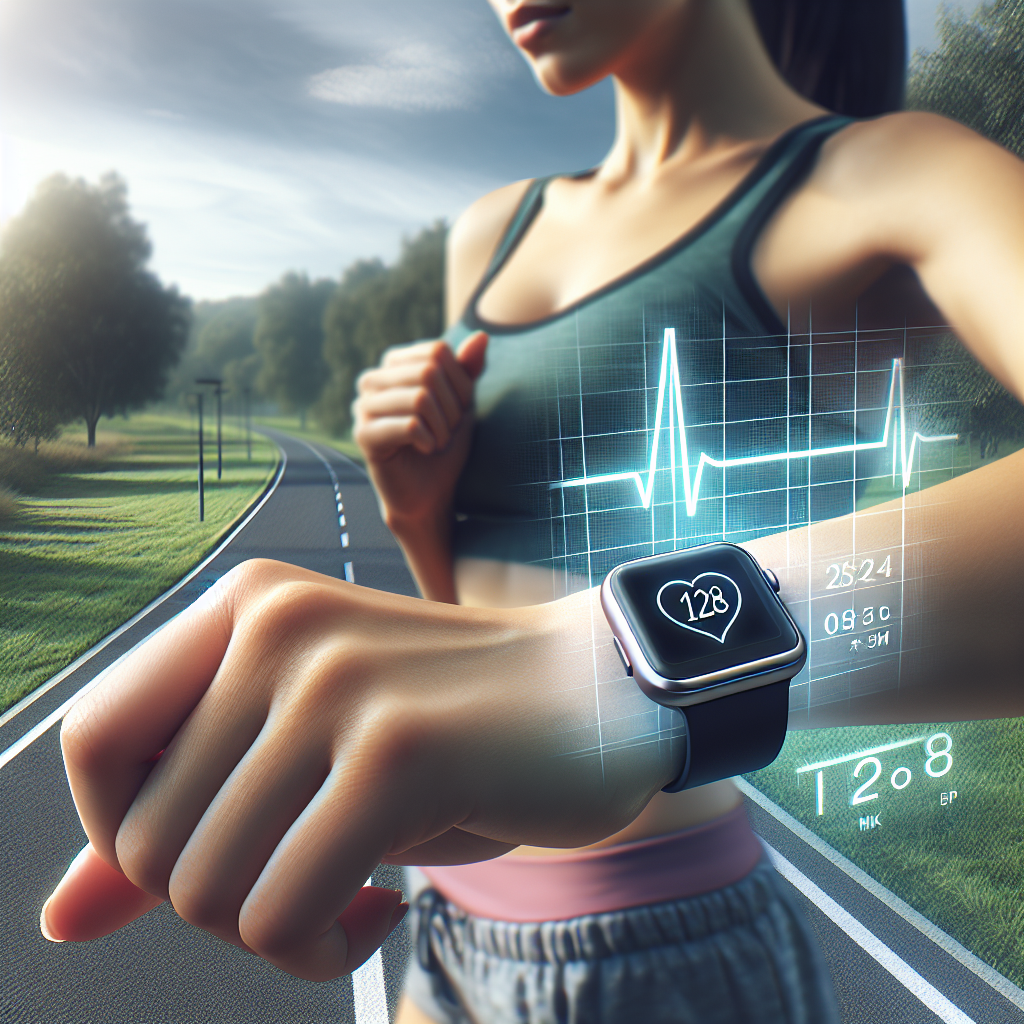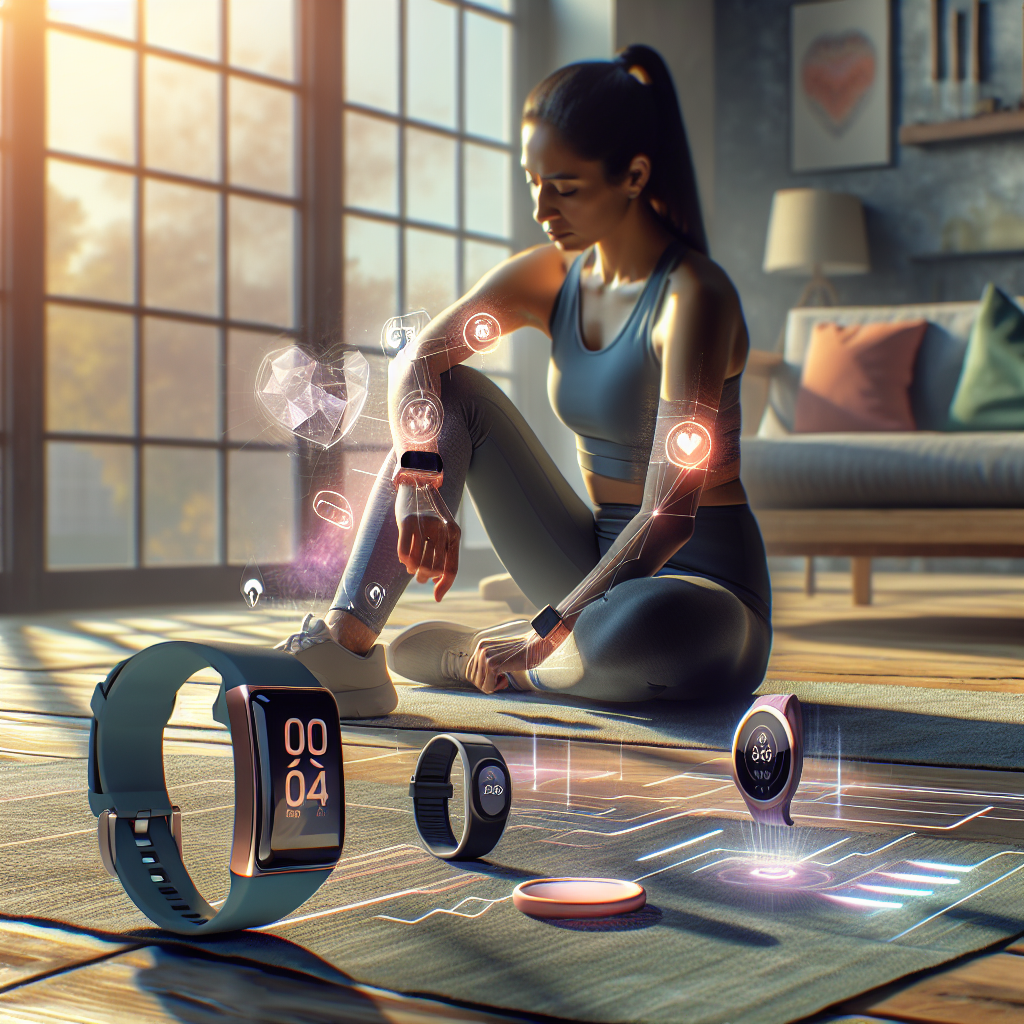Using Wearable Tech to Optimize Your Wellness Routine

Discover how to optimize your wellness routine using wearable tech. Enhance your health and fitness journey with the latest technology. Don’t wait, start today! Click here to learn more.
Maximizing Your Wellness Routine with Wearable Tech
In the modern era, technology has become an integral part of our daily lives. It has not only transformed the way we communicate, work, and entertain ourselves, but it has also revolutionized the way we approach our health and wellness. One of the most significant advancements in this regard is the advent of wearable technology. These devices, which include fitness trackers, smartwatches, and even smart clothing, have the potential to significantly optimize your wellness routine.
Wearable tech offers a plethora of features that can help you monitor and improve your health. For instance, most devices come equipped with heart rate monitors, sleep trackers, and step counters. These features allow you to keep a close eye on your physical activity levels, ensuring that you are getting the recommended amount of exercise each day. Moreover, they provide valuable insights into your sleep patterns, which is crucial as sleep plays a vital role in overall health and well-being.
In addition to tracking physical activity and sleep, wearable tech can also help you manage stress. Many devices offer guided breathing exercises and mindfulness sessions, which can be incredibly beneficial in today’s fast-paced, high-stress world. By incorporating these features into your wellness routine, you can improve your mental health and increase your resilience to stress.
Furthermore, wearable tech can also aid in maintaining a healthy diet. Some devices allow you to log your food intake, providing you with detailed information about your calorie consumption and nutritional intake. This can be particularly useful if you are trying to lose weight or manage a specific health condition. By having this information at your fingertips, you can make informed decisions about your diet and ensure that you are getting the nutrients you need.
Another significant advantage of wearable tech is its ability to motivate and keep you accountable. Many devices offer goal-setting features, allowing you to set targets for steps, calories burned, or hours of sleep. Seeing your progress towards these goals can be incredibly motivating, encouraging you to stay active and stick to your wellness routine. Moreover, some devices also offer social features, allowing you to connect with friends and compete in challenges, adding a fun, competitive element to your wellness journey.
While wearable tech offers numerous benefits, it’s important to remember that these devices are tools to aid in your wellness journey, not magic solutions. They provide valuable data and insights, but it’s up to you to use this information to make positive changes to your lifestyle. It’s also crucial to remember that while these devices can track many aspects of your health, they are not a substitute for professional medical advice.
In conclusion, wearable tech has the potential to significantly optimize your wellness routine. By providing valuable insights into your physical activity, sleep patterns, stress levels, and diet, these devices can help you make informed decisions about your health. Moreover, their goal-setting and social features can motivate you to stay active and stick to your wellness routine. However, it’s important to remember that these devices are tools, not magic solutions, and they should be used in conjunction with professional medical advice. With the right approach, wearable tech can be a powerful ally in your journey towards better health and well-being.
Incorporating Wearable Tech into Your Health and Fitness Regimen

In the modern era, technology has become an integral part of our daily lives, influencing everything from communication to entertainment, and now, even our health and wellness routines. Wearable technology, in particular, has emerged as a game-changer in the health and fitness industry, offering a plethora of benefits to those seeking to optimize their wellness routines.
Wearable tech, such as fitness trackers and smartwatches, are devices that can be worn on the body, either as accessories or as part of the material used in clothing. These devices are equipped with sensors that can track various aspects of your health, such as heart rate, sleep patterns, and physical activity levels. The data collected by these devices can provide valuable insights into your health and fitness, enabling you to make informed decisions about your wellness routine.
One of the primary benefits of wearable tech is its ability to provide real-time feedback on your physical activity. For instance, fitness trackers can monitor the number of steps you take, the distance you travel, and the calories you burn during a workout. This information can help you set realistic fitness goals and track your progress over time. Moreover, some devices can even provide personalized workout recommendations based on your fitness level and goals, making your workout routine more effective and efficient.
In addition to tracking physical activity, wearable tech can also monitor other aspects of your health, such as sleep and stress levels. Sleep trackers can provide detailed insights into your sleep patterns, including the duration and quality of your sleep. This information can help you identify any sleep issues and make necessary adjustments to improve your sleep quality. Similarly, some devices can measure stress levels by monitoring changes in your heart rate and other physiological indicators. By tracking your stress levels, these devices can help you manage stress more effectively, contributing to overall wellness.
Furthermore, wearable tech can also play a crucial role in managing chronic conditions. For instance, wearable glucose monitors can continuously track blood sugar levels, providing real-time feedback to individuals with diabetes. This can help them manage their condition more effectively and avoid potential complications. Similarly, wearable heart rate monitors can help individuals with heart conditions monitor their heart rate and detect any irregularities.
While the benefits of wearable tech are undeniable, it’s important to use these devices responsibly. It’s essential to remember that while these devices can provide valuable insights into your health, they are not a substitute for professional medical advice. Always consult with a healthcare professional before making any significant changes to your wellness routine based on the data from your wearable tech.
In conclusion, wearable tech offers a unique opportunity to optimize your wellness routine. By providing real-time feedback on your physical activity, sleep patterns, stress levels, and more, these devices can help you make informed decisions about your health and fitness. Whether you’re looking to improve your workout routine, manage stress, improve sleep quality, or manage a chronic condition, wearable tech can be a valuable tool in your wellness journey. However, it’s important to use these devices as a supplement to, not a replacement for, professional medical advice. With the right approach, wearable tech can help you achieve your health and fitness goals and lead a healthier, more balanced life.
The Role of Wearable Technology in Enhancing Wellness Practices
Wearable technology has revolutionized the way we approach our wellness routines. From tracking our steps to monitoring our heart rate, these devices provide a wealth of data that can help us optimize our health and fitness practices. This article will delve into the role of wearable technology in enhancing wellness practices, and how you can leverage these tools to achieve your health goals.
Wearable technology, such as fitness trackers and smartwatches, has become increasingly popular in recent years. These devices are equipped with sensors that can monitor various aspects of our health, including physical activity, sleep patterns, and heart rate. By providing real-time feedback, they allow us to gain a deeper understanding of our bodies and make informed decisions about our health and wellness.
One of the primary benefits of wearable technology is its ability to track physical activity. Many of these devices can count steps, measure distance traveled, and even estimate calories burned. This data can be incredibly useful for those looking to increase their physical activity levels. By setting daily step goals, for example, users can motivate themselves to move more throughout the day. Additionally, by tracking their progress over time, they can see how their fitness levels are improving and adjust their routines accordingly.
Beyond tracking physical activity, wearable technology can also play a crucial role in monitoring sleep patterns. Sleep is a vital component of overall wellness, and poor sleep can have serious implications for our health. Wearable devices can track the duration and quality of our sleep, providing insights into our sleep patterns and helping us identify potential issues. For instance, if a device detects frequent periods of restlessness during the night, this could indicate a sleep disorder that needs to be addressed.
Another significant advantage of wearable technology is its ability to monitor heart rate. This can be particularly useful for those with heart conditions or those who are looking to optimize their cardiovascular fitness. By tracking heart rate during exercise, users can ensure they are working within their target heart rate zone, maximizing the benefits of their workout. Moreover, by monitoring heart rate throughout the day, users can gain insights into how stress and other factors may be affecting their heart health.
While wearable technology can provide a wealth of data, it’s important to remember that these devices are tools to aid in wellness practices, not replacements for professional medical advice. They should be used in conjunction with regular check-ups and consultations with healthcare professionals.
In conclusion, wearable technology has the potential to significantly enhance our wellness practices. By providing real-time feedback on physical activity, sleep patterns, and heart rate, these devices can help us gain a deeper understanding of our bodies and make informed decisions about our health. Whether you’re looking to increase your physical activity levels, improve your sleep, or optimize your cardiovascular fitness, wearable technology can be a valuable tool in your wellness journey. As we continue to embrace this technology, we can look forward to a future where we are more in tune with our bodies and better equipped to take control of our health.